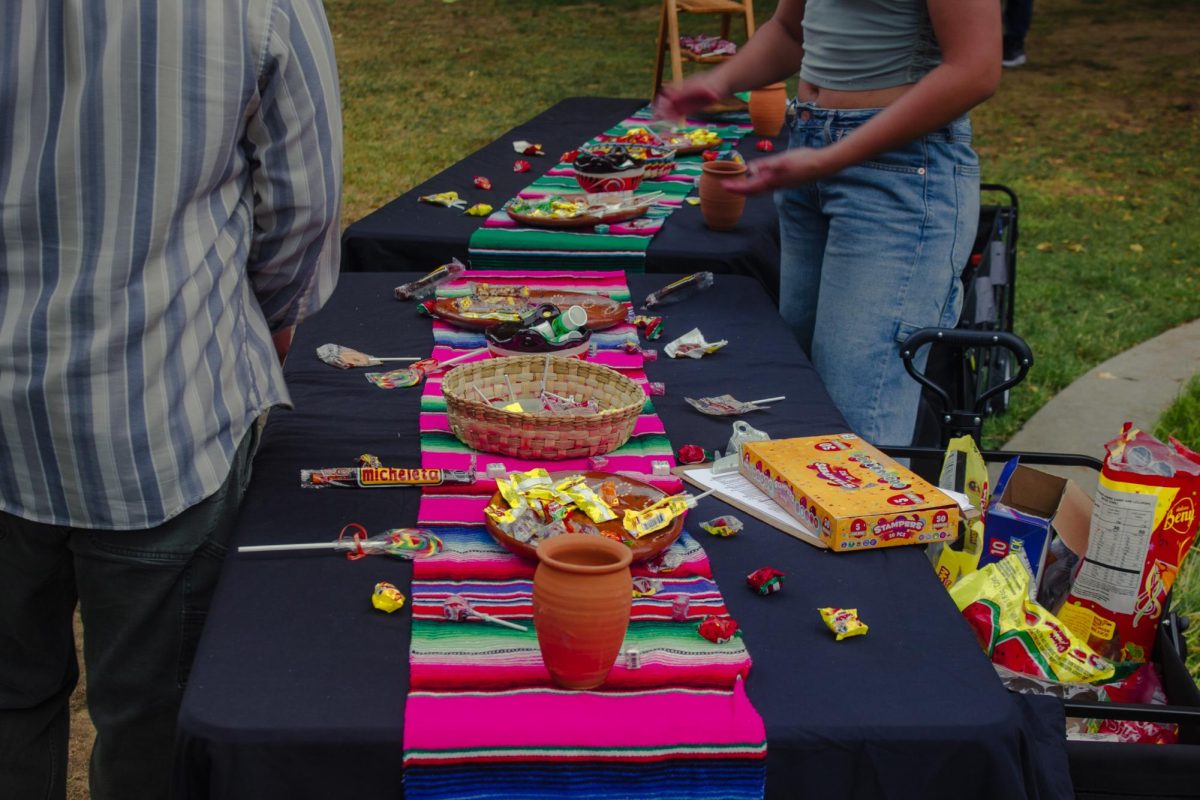The Hmong diaspora brings a fascinating fusion of food to the table.
They enjoy dishes that are traditional to them combined with elements of the countries they’ve settled in like Laos, Thailand, Vietnam and more.
From sweet and spicy to savory and fragrant, here is a list of five dishes that are enjoyed within the Hmong community.
Kapoon
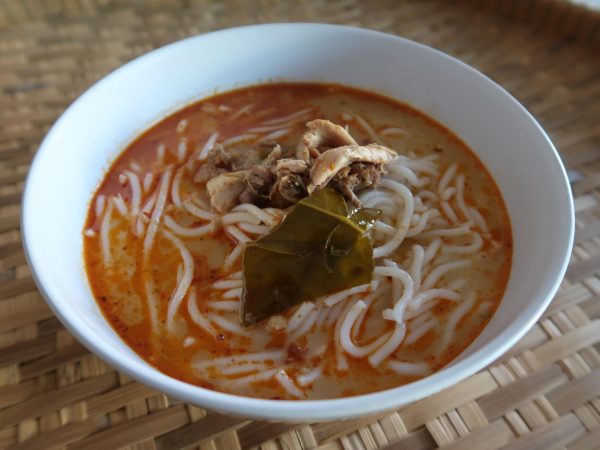
Kapoon is a red curry coconut chicken noodle soup dish originating from Laos that many Hmong people enjoy eating.
The dish is typically made to feed more than one person so a whole chicken is boiled to serve more people and also give the broth a richer poultry flavor.
When the chicken is done boiling, it is taken out and ripped into smaller pieces to be dispersed throughout the broth.
Two main ingredients that make up the flavor of the broth are coconut milk and red curry paste. The coconut milk makes the broth sweet and creamy and when paired with spicy red curry paste, the broth becomes a balance of sweet and spicy.
This dish is also more than just sweet and spicy, other ingredients like lime leaves or lemongrass add a nice aromatic touch while fish sauce can also be included for some umami flavor.
The soup also includes plenty of bamboo shoots and once the broth is finished, it is served over boiled vermicelli noodles.
It is common to garnish the dish with cabbage, cilantro, green onions, lime, chili oil and more to give it extra flavor.
Like many other dishes, this dish is made to taste. Some make their Kapoon more spicy, some may like it sweeter, it’s all up to whoever is making it. It is a dish you can always add to.
Hmong boiled chicken soup
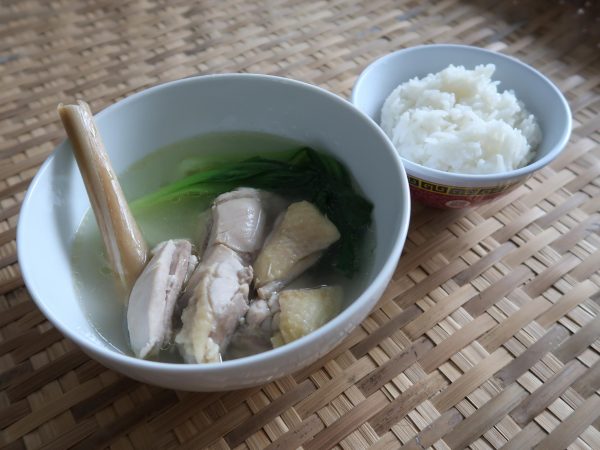
Hmong boiled chicken soup is a dish that shows how simplicity can yield exceptional flavor. This dish embodies the “less is more” concept in its preparation and taste.
It captures the essence of poultry by focusing on the natural flavors of the chicken without overpowering spices or complex preparations.
Hmong boiled chicken soup can be made to taste but is typically made of simple ingredients that include chicken, water, salt, vegetables, herbs and aromatics of choice.
In Hmong culture, it is typically paired with a warm bowl of white rice. Rice can also be added inside the soupy dish to get the “all in one” bite.
This dish is also known to be a postpartum diet for Hmong women. According to Hmong Times, Hmong women eat this dish three times a day with rice for 30 days after giving birth.
It is believed that the dish helps postpartum women since the dish is served hot and has herbs that can help the body recover quicker while being a good source of protein and carbs.
Hmong sausage
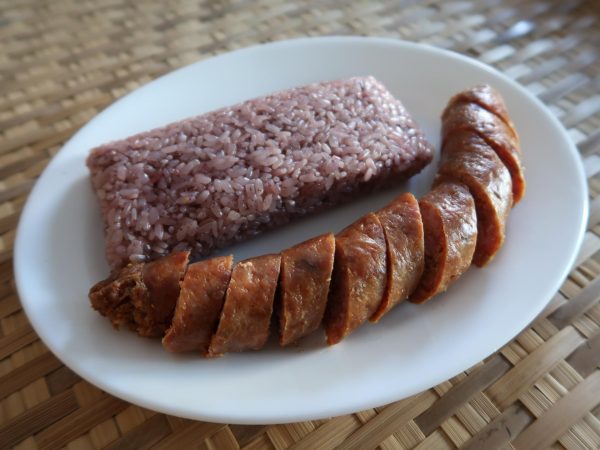
A staple in Hmong culture, Hmong sausage is made of pork and known to be rich in herbs and aromatics.
The herbs that are typically included in a Hmong sausage are cilantro, ginger, lemongrass and garlic. There is also a spicy version of Hmong sausage that includes Thai chili peppers.
The sausage is usually grilled but can be pan fried, air fried or baked.
It is typically eaten with sticky rice and many Hmong people also like to compliment the dish with extra spice by dipping the sausage in a pepper dip that is made of Thai chili peppers, fish sauce, cilantro, green onions, lime juice, salt and garlic.
Egg rolls
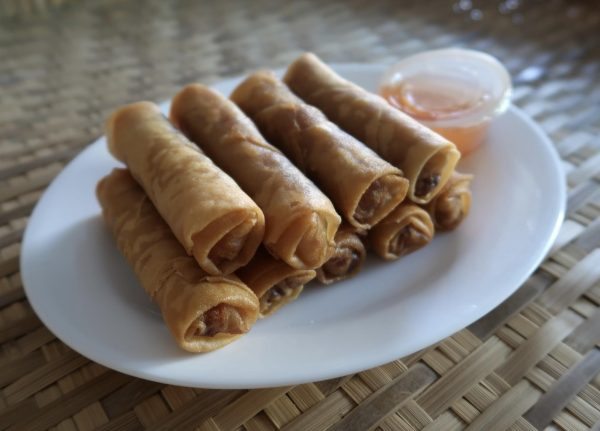
Egg rolls are loved in many parts of the world, especially in Asia. These are deep fried rolls with filling inside that usually consists of meat, noodles and vegetables.
Although many countries have egg rolls as a staple dish, not all of them taste the same or use the same ingredients.
The recipe for egg rolls can be different for each Hmong family but the main ingredients are ground pork, shredded carrots, sliced mushrooms, chopped onions, shredded cabbage and vermicelli bean thread noodles.
Egg rolls are typically paired with a sweet and spicy chili sauce but Hmong people also enjoy dipping their egg rolls in a peanut pepper dip which is made of peanut butter, Thai chili peppers, sweet chili sauce, fish sauce, lime juice, cilantro and green onions.
Nab Vam
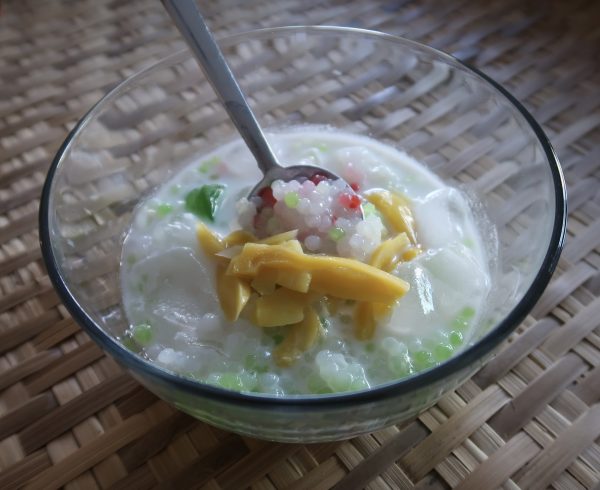
Every culture has its signature dessert, for Hmong people that dessert is called Nab Vam, pronounced like (Nah-Vah).
Nab Vam is a sweet and creamy tapioca dessert that is usually served cold.
The typical ingredients for Nab Vam consists of small tapioca pearls, coconut milk, sugar and cendol, which are small jelly-like starch strands that can be made of tapioca starch, rice flour or cornstarch and colored with green food coloring.
Hmong people like to add food coloring to the small tapioca pearls to bring color and character to the dessert. Hmong Nab Vam tends to have a tri-color look consisting of green, red and white.
This dessert also has toppings that pair well with it. Common Nab Vam toppings are jackfruit, coconut jelly, grass jelly and more.
Every bite of these dishes is a celebration of culture to Hmong people. Get the full Hmong experience by giving these dishes a try at Hmong New Year.
























































































































